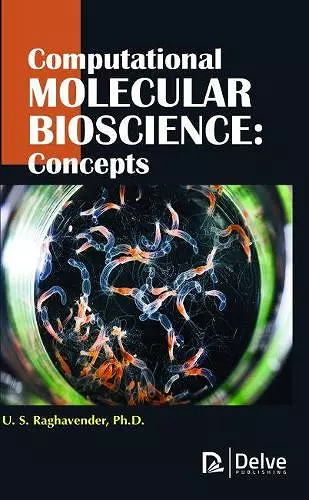Computational Molecular Bioscience
Concepts
Format:Hardback
Publisher:Arcler Education Inc
Published:28th Feb '18
Should be back in stock very soon

This preface provides information that I would recommend for someone read¬ing and using the book. This book is written keeping in mind the undergradu¬ates and graduates studying life sciences in universities. This could serve as a supplement for people involved in research.
With the flood of genomics and proteomics data, it is imperative that students in biology have a basic understanding of the data in biological repositories. Academic institutions and focussed organizations in genomics and proteomic research, in today’s world, share both raw and processed data in dedicated serv¬ers. These datasets are accessible, for free, to anybody on this planet. Under-standing how these datasets were produced requires one to study the research which prompted their existence (for example PDB or UniProt). This comprehension can result in a greater appreciation of the resource. We have provided as much information as is needed to jumpstart a curious reader’s comprehension of the actual data from the repositories using computers.
The information processing done in biology using computation (algorithms) constitutes what is known as Computational Biology. The algorithms could be graded from simple to complex, based on the assumptions employed. In this book, we present basic concepts in computational molecular biology in the form of simple capsules. What I mean by that is the reader, with a laptop or a computer, can immediately start executing the code in the book to understand the concepts at a deeper level. As the focus is not on algorithms, we have kept the language quite simple. The places which demand detailed explanation have been dealt with accordingly. Otherwise, the presentation has been kept short. Basically, we start from sequences, then go to structures and try to find an evolutionary connection between sequences and structures.
- 1. We start with an Introduction to biology and genes and proteins.
- 2. Following which, we introduce the basics of Python. This is a must for any curious student starting in computational biology.
- 3. In the third chapter, we introduce sequences in biology and the com¬monly used formats (e.g., FASTA). We also introduce different ways of comparing sequences. BLAST and EMBOSS suites are introduced.
- 4. R, the statistical language, is introduced. This is of utmost importance, given the fact that any biological observation and experimental results seek statistical significance. The basics...
ISBN: 9781773612423
Dimensions: unknown
Weight: unknown
300 pages